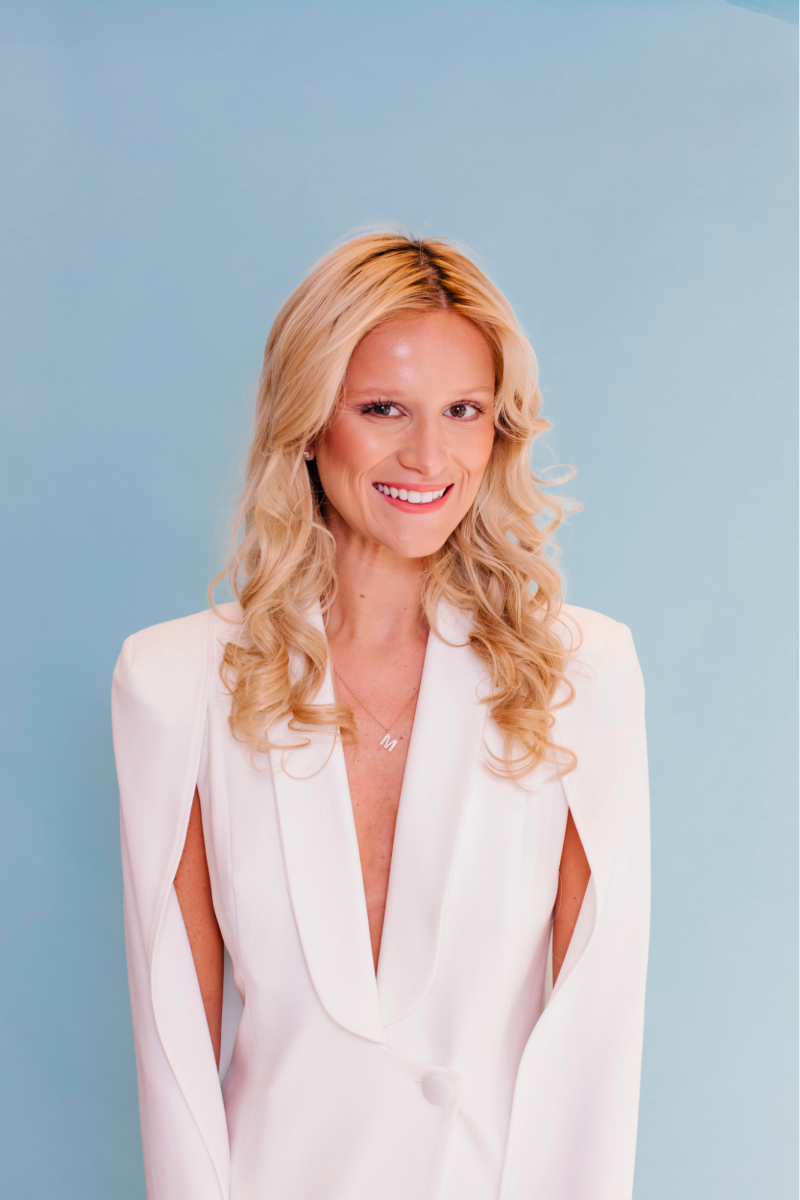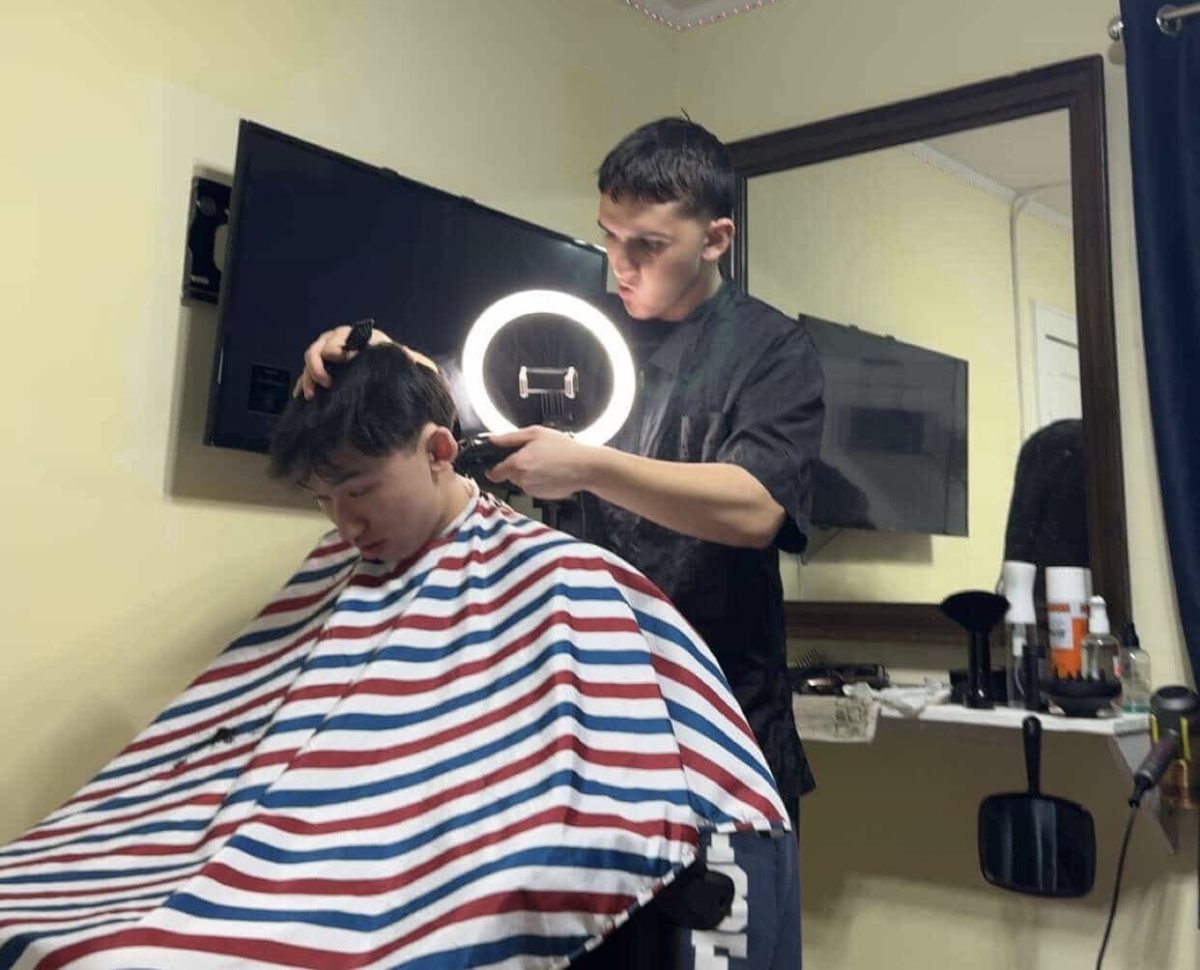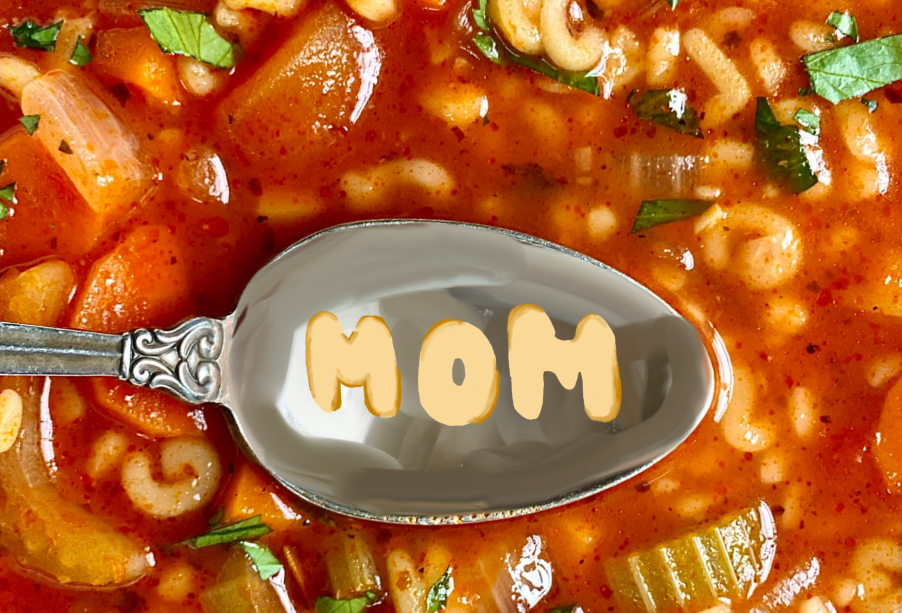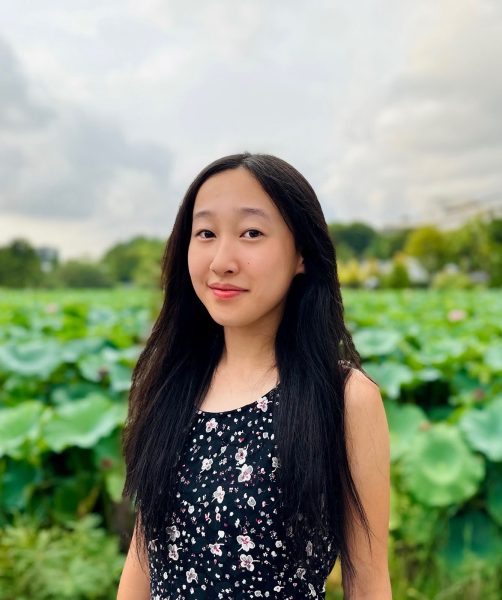Ms. Mollie Blank is a results-driven marketing professional in the luxury beauty industry. She is currently the Assistant Global Marketing Manager at Buxom Cosmetics. Mollie is currently completing her Master’s of Professional Studies in Cosmetics and Fragrance Marketing Management, graduating in June. She has a Bachelor of Science in Apparel Merchandising with a double minor in Business and Marketing from Indiana University. She specializes in product innovation, brand strategy, brand management, and brand identity. Other key skills she has is competitive analysis, budget management, communications, digital strategy, marketing operations, and team leadership. She utilizes her specialties and skills to work toward her overall goal to contribute a substantial impact to the luxury beauty field.
Sarah Sun: When did you attend Great Neck South High School? What was your most memorable experience?
Mollie Blank: I attended from 2011 to 2015. I definitely did a lot of different types of activities. From an educational perspective, my most memorable was in DECA because it exposed me to the different facets of the business world and how it functions. I’m also very fortunate today that my closest friends from high school are still in my life, and we’re all very connected.
SS: Was there a teacher at South that particularly influenced you?
MB: First is Mrs. Demetres, in the business department—she was the one that really brought the business world interest into my life. At Great Neck South, I started my adventures in the business class fashion marketing, and from there, I learned about all the other business courses that were offered, including the ones that you receive college credit for. It really gave me a well-rounded perspective of what to anticipate and what a career in business could be like, even before getting to college.
Another teacher that influenced me was my Spanish teacher, Ms. Tavares. She, from day one, always pushed me outside of my comfort zone. She was fun and energetic, and today, I still use a lot of Spanish in my job for translations. From a global perspective, Spanish is very widely spoken across a lot of different cultures, so it’s really great to be able to utilize that skill in my everyday role.
SS: You mentioned that your passion for marketing and fashion began in high school. What inspired you to pursue a career in the beauty industry and marketing?
MB: I’ve always had a knack for fashion. When I was considering careers, I went through a process of elimination. I tailored my career journey by weighing my strengths and weaknesses. This was how I selected the Apparel Merchandising Program at Indiana with a double minor in business and marketing.
I kind of fell into beauty by accident. I first thought I wanted to work in fashion and that I was going to be a buyer for Chanel or Theory. That inherently didn’t happen. I ended up getting an internship with Nylon magazine the summer going into my sophomore year of college, where I was a merchandising intern as well as an e-commerce intern.
When I was working at Nylon, they had an e-commerce site called the “Nylon Shop”. The shop sold apparel and clothing accessories. For the magazine part of the business, they were getting ready to do a piece on their Beauty Awards. I’ve worked in beauty for over six years now, and I’ve seen a lot of products in my life, and I still don’t think I’ve ever seen as many products as I did that day. There were the biggest cardboard boxes you could possibly imagine, with makeup, skincare, fragrances, haircare; anything you could possibly dream of. It was like watching kids in a candy store—people would bring the sturdiest bags they could find, and it was a race to shove as much product in your bag as you could. I would come home, dump it all on the counter, and everyone in my house would dive in. That was when I started liking products more than clothes. I would sit down swatching different products on my arm and trying them out. That’s when I knew there was something here. I then began researching beauty careers and the skills I needed to obtain in order to be successful in this field.
I obtained an internship with Coty the following summer, the summer going into my last year of college. They’re a middle-sized beauty company; most notably, they are the conglomerate behind Kylie Cosmetics, but they have many notable brands in their portfolio such as Burberry, Cover Girl, Calvin Klein, Tiffany & Co., Marc Jacobs, etc. The internship was a 12-week structured program. I worked on the Calvin Klein, Marc Jacobs, and Tiffany & Co. fragrance businesses. At the time, Tiffany didn’t have a fragrance available in the US market for sale. I worked on the team that helped launch the first fragrance they ever put into America. In the industry, we call this the signature fragrance launch. My internship solidified the fact that I wanted to work in beauty, and it exposed me to what a big beauty company looks like, how they operate, and what it takes to get a product onto shelves in a store such as Sephora or Bloomingdale’s. I feel if I hadn’t worked at Nylon, I would have never been in the beauty industry, so it’s just funny how things work out.
SS: What was it like transitioning from fashion to beauty?
MB: When you’re younger, there’s a perception when you read the word marketing and you think it’s about building a campaign. This is part of it and is true. However, there are definitely skills that parallel between both industries, but as you explore different careers, fashion and beauty are two examples, you will learn that each field and companies have their own language and nuances that help aid communication and execution. Having a merchandising background helped the transition from fashion to beauty, because merchandising and marketing are not proprietary to one industry vs. another. They overlap across industries. However, there are industry nuances and specific terminologies that aid success. Specifically, there is even distinction in different categories of the beauty industry, for example, cosmetics versus fragrance. This impacts a lot of the ways that we speak and communicate about products and processes and how they differ from one another. There’s a culture surrounding the way you speak about things; half the time when we launch something, we’ll say “that launch is my baby”, because we worked on it from start to finish. Now, this world is super omni-focused, meaning traditional and digital marketing. We need to evolve on all fronts as this is considered standard best-in-class practice.
SS: I feel like many people don’t know the specifics of the whole process of getting a product on the shelf. What is your role in this process?
MB: There are so many different types of marketing that I think people don’t always necessarily understand. For example, influencer marketing is considered very separate from what I do, and similarly, digital marketing is nothing like what I do. One of the things that is not traditionally taught in marketing classes is all the different types of marketing that exist, which is more than how you execute a campaign.
I am a global marketer. Global marketing in my role focuses on product ideation and brand development. Let’s say you wanted to launch a new lipstick. Sephora, as an example, would contact us and say, by September 2025, we want you to bring a new lipstick into our stores, and these are ideally the benefits we’d want the product to deliver. I would conduct industry research. We invest a lot of money into competitive databases in order to analyze upcoming trends. This helps us figure out where to focus our innovation to follow where our consumer is looking to spend. Sometimes we cannot fulfill every request a retailer, like Sephora, wants. We need to make a business decision about what is best for the brand’s longevity. I would then put together a PowerPoint execution plan outlining whether the lipstick is a good opportunity to invest or not. If not, maybe another item like a liquid blush. Following that, I would refine my presentation and rationale, alongside a budget to share essentially what is needed for a successful execution.
Then, we would present it to executive leadership, and if all goes well, we get the green light, and we partner with our cross-functional teams, such as the product development team. Their job is to work with companies that will actually make the formulas of the products. We give the direction from a marketing standpoint, and they’ll then come back to us with different options. Honestly, my favorite days are when we sit in a conference room and we literally try everything on. It’s a really important part of the job, but it does feel like you’re playing with makeup and I absolutely adore it. But, we always have to remember what our business objective is. For example, I like matte lipstick, but if we’re trying to sell a satin lipstick, I have to pick the ones with the best benefits that are going with what messaging we’re trying to achieve. We always have to think about our consumer first.
Once we narrow that down, we’re also working with a packaging team, who designs what the formula is going to sit in, called a component. There’s a whole team that develops different concepts starting from the physical component itself including the functionality and texture to the material of the component alongside the color. We also come up with the legal language. So when you purchase a product it will come in an outer carton. Everything you see written on the carton from the name to ingredients to the warnings is critical, so it’s important to ensure it is correct. Once all that’s together, we bring our product to life. Then, we have more of a traditional marketing process that you would most likely think of, including a photo shoot for the images to go alongside a campaign and planning what a PR event would look like. This may feel like a lot but it is a very top-line version of what I do. There are a lot more details that are involved in the process. Typically this process, if done correctly, takes about two years before the product reaches the hands of a consumer. One of the challenges with the world we live in today is that everyone wanted everything yesterday, especially with modern-day social media.
SS: You’ve worked for many different brands—what do you think makes each of them unique?
MB: Every brand has its own personality and voice. I primarily work in luxury beauty; BUXOM is the most premium brand I’ve ever worked on. For brands I’ve worked on in the past, the places where they make money are department stores rather than a Sephora or an Ulta. What’s interesting about a luxury brand is that these brands do not have to blow up on TikTok to make money; the consumer is very loyal, and they value the quality that they know they’re getting when they purchase that name. Because these brands have established such a reputation, they don’t have to do so much work to get consumers to make a purchase. On the contrary, what’s a little bit more challenging about some of the brands that you’re probably going to Sephora and Ulta for to buy is that the consumers, especially younger generations, are not loyal as a demographic. They have more of a willingness to try new products than people who are a bit older.
We have a term in the industry called “staple products,” which are products that you’ll always continuously buy and never switch out to try something else. The older generations tend to experiment less. Many of the brands I have worked on, the target consumer geared older so I knew we were always going to make a certain amount of money each year on best sellers regardless of the tactics implemented. Currently, though, there are more question marks than there used to be. It’s harder for me as a marketer to anticipate how to grow the business, because for the younger generation, where they spend money is always changing.
SS: Do you find that there are variables that have changed in the beauty industry, especially in more recent times, including the digital/TikTok revolution?
MB: Yes; the digital revolution itself, of course, has given a whole new light to beauty. Aside from that, I think COVID was the biggest test for our industry. The way I did my job when I started working in 2018, and even before the pandemic, has greatly shifted now. Previously, there was a routine-like pattern to my job; I always knew at certain times of the year, I had to perform certain things to get the job done. Now, in this world where the consumer is more unpredictable, it’s harder to anticipate how to get ahead. Since COVID, dupe culture is a big part of that—it’s one brand copying another, where they knock off a best-selling product to get on board the phenomenon. Typically the “dupe” is cheaper and comes from a luxury brand and has a strong appeal about the product. There’s also TikTok—if you see your favorite influencer wearing a product, you’re probably gonna buy it in five seconds.
It’s really great as a brand when you go viral and you know you can sell out, but there’s also a down side. One of the biggest examples of this is Clinique. Clinique has a shade in their lipstick lineup called Black Honey. Before COVID, nobody had ever heard of the shade Black Honey, and it was one of their worst-selling shades. As a business, we have what we call an MOQ (minimum order quantity). We work with a vendor and it costs a certain amount of money to produce a certain amount of items of that shade to then bring it to our warehouses, so we can distribute it to Sephora or department stores or any retailer our brand is sold. During COVID, an influencer got their hands on Black Honey and it went viral. Since it wasn’t a best seller, the amount of units the company produces was not as high as some of their shades that sell better. And in COVID, there were a plethora of reasons why it took a long time to get things back into stock. Then what happens is, when you go viral on a product and you’re not ready for it, you can’t get the inventory in time to feed off of that demand and it becomes too late, where the consumers have either moved on to different products entirely or found something from another brand that works similarly. So, it’s very hard to be a social brand because you’re playing off hype, so to speak, and if you can’t maintain that, it’s really dangerous for your business because you could be sitting on excess inventory that may expire. In order for a brand to truly be successful it needs an authentic brand for consumers to believe in, not one social media video which is a marketing tactic.
Additionally, consumers these days are becoming more vocal. The consumer tells us as the brand what they want and why they have to have it and usually they want it immediately. The consumer tells us why they have to have it. But, this is also dangerous. The consumer believes now they are smarter than the people behind the brands based on the easy accessibility to information between social media and internet search. A big example of this is conversations around ingredients and sustainability. For example, when Sephora came out with their clean beauty ingredient program, everyone suddenly thought they were an ingredient expert. They hear one word and decide if something is good or not good for you. We don’t really have a system in America that regulates a good ingredient versus a bad ingredient, but a lot of times, most of these ingredients aren’t bad.
Sometimes brands have to reformulate products when consumers see one ingredient and they blow the negative effects out of proportion, and the brand has to respond. The same thing goes for sustainability when it comes to packaging, where there is no standard across categories on what’s considered acceptable. As a consumer, you have to do your best to navigate through everything, but you also have to be cautious about where you are getting your information and take everything with a grain of salt and consider the source.
SS: What is your perspective on changes in the beauty industry?
MB: I think the beauty industry is definitely seeing a lot of change that we should have been doing for years now. A lot of the product innovation that’s coming out is fantastic, but it could have been done years ago. I also think the beauty industry is in a dangerous position. We’re so accommodating to the consumer to the point that we’re not actually educating them and really setting down the foundation for what’s good and what’s bad. Also, the truth of the matter is beauty is not a one-size-fits-all industry. One of the things that makes this industry work, and why you see so many brands all the time, is that everyone’s beauty routine is different, and that’s completely fine.
SS: What advice would you give to high school students, young professionals, or anyone in the process of figuring out themselves and their future?
MB: In general, just reach out to people that you know and have areas of expertise that you’re interested in. One of the things you constantly hear from a young age is networking, but I think what falls short is people don’t necessarily learn how to foster relationships once they get in touch with someone. Also, seek advice from outside perspectives. I’m definitely very fortunate in my career to have had a lot of great mentors, and my closest mentor doesn’t even work in marketing—she’s actually a chemist at another beauty company. It’s great sometimes to reach out to someone who’s in your industry, but maybe not necessarily so close to what you do every single day because they might see things from a different light. I also have a lot of marketing mentors in beauty too—it’s just balancing out both and figuring out what works best for you.
SS: You have a goal to be a changemaker and innovator in the industry. What are you working on now? What’s next for you?
MB: If you asked me that question a year ago, I probably would have had an answer. I am enrolled in a master’s program with FIT, where I go to school with people across many different beauty giants and brands in the industry, and we work in innovation and changemaker research. As we’re getting all these new perspectives, what I want to see in beauty has changed. Our biggest challenge is to ensure authenticity, and for myself as a marketer, I want to just work on brands that want to make an impact and know who they are in a world where there are a lot of copycat brands. How can a brand differentiate itself in an industry that’s so crowded? What unique things or unique impact can a brand offer? That’s one of the great things that my Master’s program does for me—I have concentrated time to figure out an answer that I don’t know if I’ll ever have, but I’m working on it.







